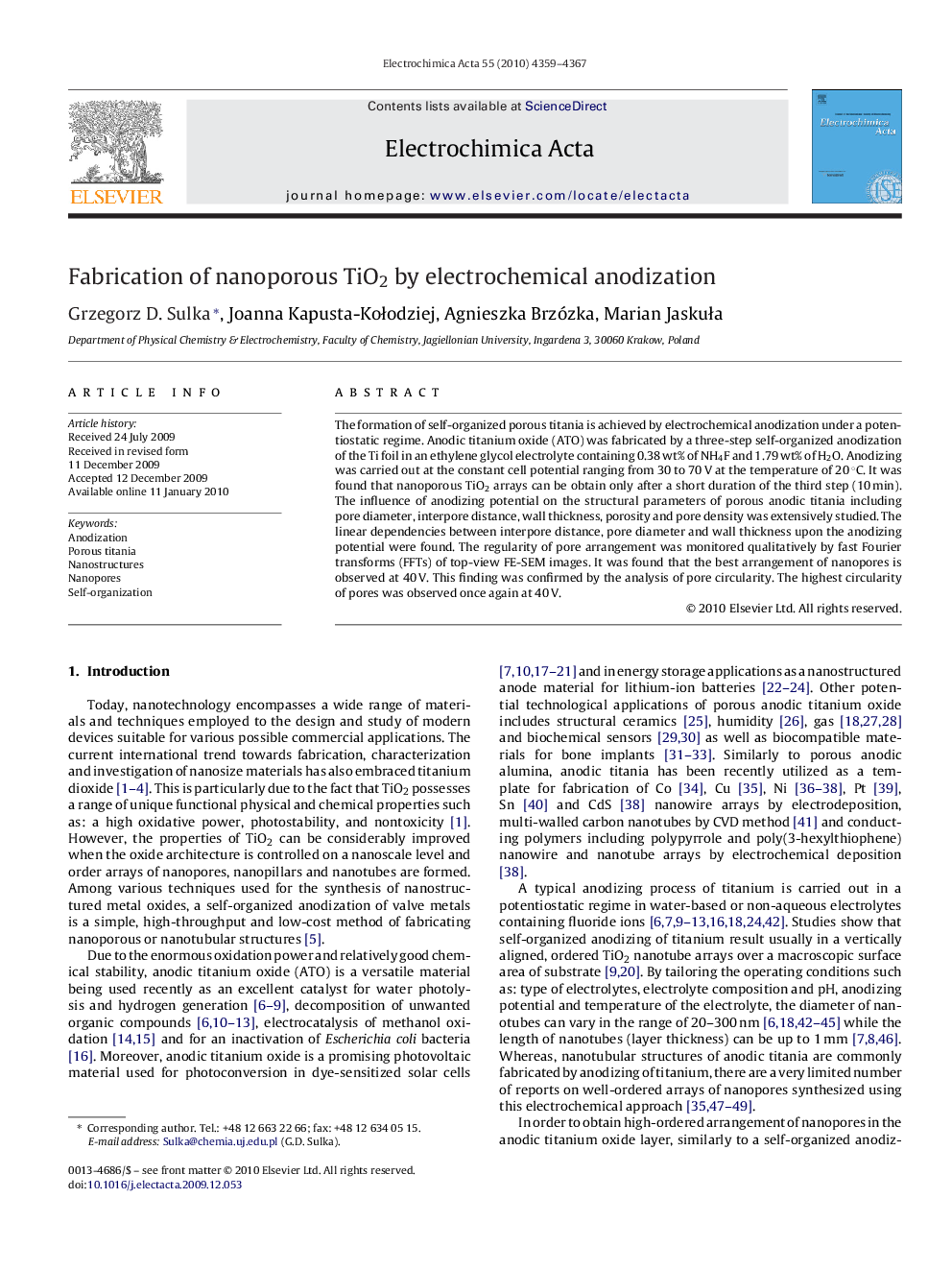| Article ID | Journal | Published Year | Pages | File Type |
|---|---|---|---|---|
| 190976 | Electrochimica Acta | 2010 | 9 Pages |
The formation of self-organized porous titania is achieved by electrochemical anodization under a potentiostatic regime. Anodic titanium oxide (ATO) was fabricated by a three-step self-organized anodization of the Ti foil in an ethylene glycol electrolyte containing 0.38 wt% of NH4F and 1.79 wt% of H2O. Anodizing was carried out at the constant cell potential ranging from 30 to 70 V at the temperature of 20 °C. It was found that nanoporous TiO2 arrays can be obtain only after a short duration of the third step (10 min). The influence of anodizing potential on the structural parameters of porous anodic titania including pore diameter, interpore distance, wall thickness, porosity and pore density was extensively studied. The linear dependencies between interpore distance, pore diameter and wall thickness upon the anodizing potential were found. The regularity of pore arrangement was monitored qualitatively by fast Fourier transforms (FFTs) of top-view FE-SEM images. It was found that the best arrangement of nanopores is observed at 40 V. This finding was confirmed by the analysis of pore circularity. The highest circularity of pores was observed once again at 40 V.
